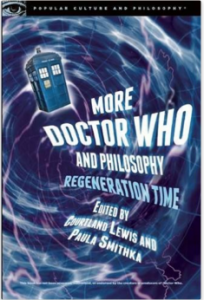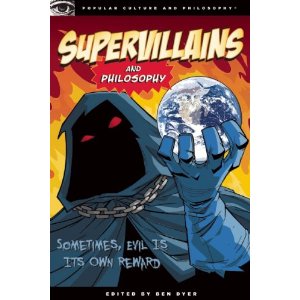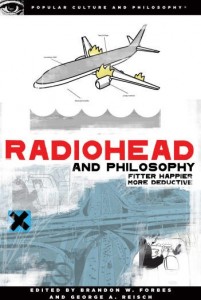General Audience
Publication Types:

Meeting Up with Yourself
Abstract
In this chapter we explore the possibility of meeting one’s self through time travel as a metaphor of the digital footprint one leaves through his or her use of social media. Nietzsche says that one is always a different person. Whether or not we accept that in a literal, ontological sense, we can all agree that we as adults tend to think about the world differently than we did when we were children. Now, thanks to sites like Facebook, Twitter, and Blogger, many of the thoughts and feelings of our former selves are easily captured and stored indefinitely on the Internet, which allows us to go back and glimpse versions of our former selves. Do these resources allow me to go back and experience myself, not as myself but as Other?
For philosopher Gilles Deleuze, the experience of the Other is an expression of a virtual possible world which allows one to see another side to the events that she lives. Learning, for Deleuze, requires a shock, and our encounters with Others can potentially offer just such a shock. In order to truly learn, though, we must not imitate the Other, but instead enter an assemblage with Other, bringing together two possible ways of expressing the world. Along with Deleuze, we explore the concept of Other through several existentialist philosophers.
In addition to examples of the Doctor meeting other versions of himself, this type of assemblage and learning is demonstrated by The Girl Who Waited. The Girl meets Amy, an earlier version of herself. In her own past she refused to help herself be rescued by the Doctor and Rory, but through the creation of an assemblage of Amy and The Girl and the shock of this meeting, The Girl becomes worthy of the events happening and makes the ethical decision to help rescue Amy.
Though we often think that we each become wiser as we age, a Deleuzian perspective on the Self as Other allows us to ask the question: what might we learn through confronting our younger selves as Other, either through time travel or social media?

Mastering Prezi for Business Presentations (2nd ed.)
Engage your audience visually with stunning Prezi presentation designs and be the envy of your colleagues who use PowerPoint with this book and ebook
About This Book
- Turns anyone already using Prezi into a master of both design and delivery
- Illustrated throughout with easy-to-follow screenshots and some live Prezi examples to view online
- Transform your standard PowerPoint presentations into an engaging and memorable Prezi
Who This Book Is For
If you use Prezi in business and want to take your presentations to the next level, or if you want to become the office Prezi master, this book is for you.
What You Will Learn
- Insert sounds into your Prezis for narration or for use in online delivery
- Differentiate between Raster and Vector imagery to optimize your Prezi design
- Develop consistent branding in your Prezi
- Design Prezis for use online without a presenter guiding the audience
- Collaborate with colleagues overseas using Prezi
- Turn company slides into non-linear Prezi presentations
- Create custom menus for embedded Prezis
In Detail
Prezi is a tool for delivering presentations in a linear or non-linear format. This cloud-based software enables users to structure presentations on an infinite canvas in a way that is more engaging and visually stimulating to the audience.
This book covers all of the technical elements of the software, whilst also looking at the practicalities of using Prezi in a business environment. It teaches the reader how to think for Prezi, and approach their design in the best way. This is an essential resource for people who want to use Prezi seriously. Apart from covering best practices for inserting images, sound, and video, this book also covers topics for business users such as collaborating and sharing Prezis online, using Prezi at a meeting to brainstorm with overseas colleagues, and how to “Prezify” PowerPoint or Keynote slides. This book will escalate you from Prezi user to Prezi master with ease.

Doctor, Who Cares?
Introduction
Doctor Who is a renegade among Time Lords because he involves himself in the affairs of the universe despite this being prohibited by Time Lord policy. Although his personality can differ somewhat from one incarnation to another, the Doctor is essentially a compassionate and caring being – he cares for the particular individuals he meets as well as the universe as a whole. It is precisely this pension for caring which leads the Doctor to involving himself in the universe – and undoubtedly he makes the universe a better place for it.
The ethics of caring, a relatively new philosophic development, is a system spearheaded by feminists who believe that traditional ethical systems are male-biased and don’t account for the way women experience the world. Of course, most who support a feminist ethics don’t believe the differences this system reflect can be split right down the gender line – it’s simply an easy generalization to make. The Doctor, then, is all the more interesting because he, as a man, represents an ideal example of the ethics of caring.

Mojo’s Tribe Has Spoken!
Introduction Excerpt
Mojoworld can be understood as a metaphor for the very real television culture of the past two or three decades. Mojo’s tireless efforts to keep his society from boredom mirror the television industry’s push for fresh and exciting programming each new season. These fresh and exciting ideas have increasingly become reality shows, many of which are quite similar to Mojo’s gladiator-style contests. Sure, the comparison between Mojo and our own television producers is not a perfect metaphor, but the similarities are interesting.
It’s very easy to dismiss Mojo as a villain confined to the pages of a comic book because in the real world, things are always a bit more complex and a bit less certain. Television stations are rarely vilified for seeking to increase their ratings as Mojo is, but like any other television producer, Mojo produces entertainment that people want. In the X-Men series episode “Mojovision,” Mojo makes it clear that the audience doesn’t want to see things like peace, or freedom, or good government. They want blood and guts and love and hate. In the Mojoverse, good ratings are generated by showing the audience what they want to see. Mojo simply produces whatever will satisfy that desire, and his ratings and power increase the more he does so.
If the audience didn’t want to see blood and guts and love and hate, then they probably wouldn’t watch those programs, and Mojo’s ratings would decrease. In other words, Mojo would have absolutely no incentive to produce those shows. Yet both in Mojo’s universe and in our own, people continue to watch these types of shows, so studios continue to produce them. Mojo’s defense of himself is that he, the same as our own television studios, is just innocently serving a public which is already immoral.

